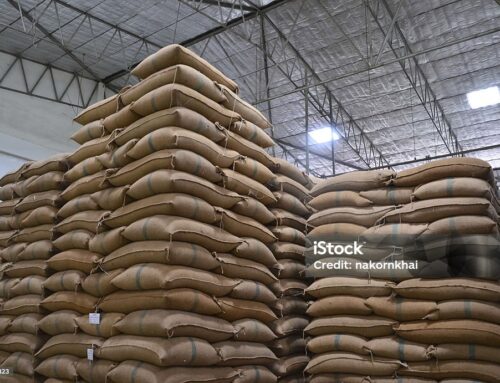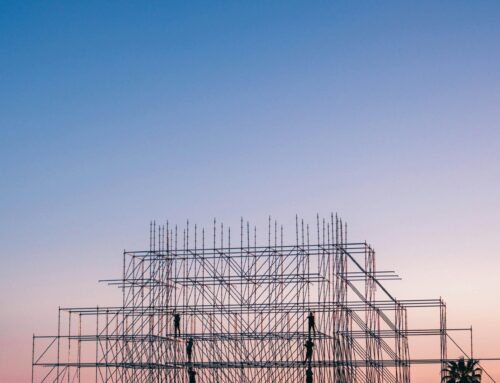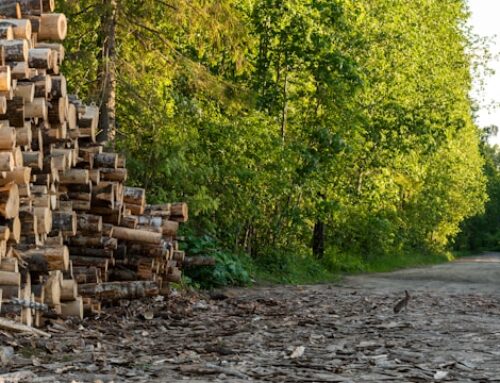
Arabica coffee. The very name conjures images of fragrant, steaming cups, the gentle buzz of caffeine fueling our mornings and afternoons. More than just a beverage, Arabica coffee is a significant global commodity, a cornerstone of economies, and a vital part of the livelihoods of millions. Its journey from a humble bean to a globally traded asset is a fascinating tale, interwoven with history, geography, and the ever-evolving tastes of consumers. This exploration delves into the intricacies of Arabica coffee as a commodity, contrasting it with its robust cousin, tracing its historical cultivation, mapping its global footprint, and examining the challenges and opportunities that lie ahead.
Arabica vs. Robusta: A Tale of Two Beans
At the heart of the coffee world lie two dominant species: Coffea arabica and Coffea canephora (commonly known as Robusta). While both contribute significantly to global coffee production, they possess distinct characteristics that influence their cultivation, flavour profiles, and market value.
Arabica: Often hailed as the “queen” of coffee, Arabica is prized for its nuanced and aromatic flavour. Typically exhibiting notes of fruit, flowers, chocolate, and nuts, Arabica beans offer a smoother, more complex cup with a higher acidity. These delicate flavours are a result of the higher altitudes (typically 600-2200 meters above sea level) and cooler, wetter climates in which Arabica thrives. The Arabica plant itself is more delicate and susceptible to diseases and pests, requiring more meticulous care. Its lower caffeine content (around 1.5% by weight) also contributes to its gentler character.
Robusta: As its name suggests, Robusta is a hardier species, capable of growing in hotter, more humid climates and at lower altitudes (typically sea level to 800 meters). This resilience translates to a more straightforward, bolder flavour profile, often described as having rubbery, earthy, or bitter notes. Robusta boasts a higher caffeine content (ranging from 2.5% to 4.5% by weight), delivering a more potent kick. Its robust nature makes it less vulnerable to pests and diseases, contributing to higher yields and lower production costs. Consequently, Robusta is often used in espresso blends for its crema and caffeine content, as well as in instant coffee and lower-priced blends.
The fundamental differences in flavour and cultivation have established Arabica as the premium commodity, generally fetching higher prices in the global market compared to Robusta.
A Journey Through Time: The History of Arabica Coffee Farming
The story of Arabica coffee begins in the highlands of Ethiopia, specifically in the southwestern region of Kaffa (from which the name is believed to originate). Legend has it that a goat herder named Kaldi noticed his goats becoming unusually energetic after nibbling on the berries of a particular tree. Intrigued, he tried the berries himself and experienced a similar invigorating effect.
From Ethiopia, coffee cultivation spread across the Red Sea to Yemen in the 15th century. For a time, Yemen held a tight monopoly on coffee production, carefully guarding the “beans of Arabia.” However, in the 17th century, coffee cultivation began to spread beyond Arabia, thanks to determined efforts to smuggle seeds and seedlings.
India became one of the first places outside of Arabia to cultivate coffee. European colonial powers played a significant role in disseminating coffee cultivation across the globe, establishing plantations in their colonies in Asia, Africa, and the Americas. The Dutch introduced coffee to Indonesia in the late 17th century, and from there, it spread to other parts of Southeast Asia.
The 18th century witnessed the arrival of coffee in the Americas. Gabriel de Clieu, a French naval officer, is credited with bringing a single coffee plant to Martinique, from which much of the coffee in the Caribbean and South and Central America is believed to have originated. Brazil, with its vast land and suitable climate, quickly rose to become the world’s dominant coffee producer, a position it largely holds to this day.
The Global Tapestry: Countries that Harvest Arabica Coffee
Today, Arabica coffee is cultivated in numerous countries across the globe, primarily within the “coffee belt” – the tropical and subtropical regions between the Tropics of Cancer and Capricorn. While Brazil remains the largest producer overall (with significant Robusta production as well), several other countries are renowned for their high-quality Arabica beans:
South America:
- Colombia: Famous for its mild, well-balanced Arabica with notes of citrus and caramel.
- Ethiopia: The birthplace of Arabica, producing diverse and often floral or fruity coffees.
- Peru: Known for its organic and Fair Trade Arabica with delicate flavors.
Central America:
- Guatemala: Offers a range of Arabica profiles, from bright and acidic to rich and chocolatey.
- Costa Rica: Renowned for its high-altitude, strictly hard bean (SHB) Arabica with bright acidity and clean flavors.
- Honduras: Increasingly recognized for its quality Arabica with diverse flavor profiles.
Africa:
- Kenya: Produces vibrant and complex Arabica with blackcurrant and wine-like notes.
- Tanzania: Known for its Kilimanjaro coffee, often with bright acidity and fruity undertones.
Asia:
- Indonesia (specifically regions like Sumatra and Sulawesi): Produces unique Arabica with earthy and bold characteristics.
- India: Cultivates Arabica in the Western Ghats, known for its mild and spicy notes.
This list is not exhaustive, as many other countries contribute to the global Arabica supply, each with its unique terroir influencing the flavor of the beans.
Threats to the Bean: Risks in Arabica Coffee Farming
Arabica’s delicate nature makes it susceptible to a range of risks that can significantly impact yields and quality:
Pests:
- Coffee Berry Borer (CBB): One of the most devastating pests globally, the CBB bores into coffee cherries, damaging the beans.
- Leaf Miners: These insects create tunnels within coffee leaves, reducing the plant’s ability to photosynthesize.
- Scale Insects and Mealybugs: These sap-sucking insects weaken the plant and can transmit diseases.
Diseases:
- Coffee Leaf Rust (CLR): A fungal disease that causes orange or yellow spots on leaves, leading to defoliation and reduced yields.
- Coffee Berry Disease (CBD): Another fungal disease that attacks coffee berries, causing them to rot and fall off.
Environmental Factors:
- Climate Change: As discussed in detail later, rising temperatures, altered rainfall patterns, and increased frequency of extreme weather events pose a significant threat.
- Frost: Unexpected frost can severely damage or kill coffee plants, especially in higher-altitude regions.
- Drought: Insufficient water supply during critical growth stages can lead to reduced yields and bean quality.
- Soil Degradation: Poor farming practices can deplete soil nutrients and make plants more vulnerable to pests and diseases.
Economic Factors:
- Price Volatility: Global coffee prices can fluctuate significantly due to supply and demand dynamics, weather events, and speculative trading.
- Market Access: Smallholder farmers may face challenges in accessing markets and obtaining fair prices for their beans.
The Foundation: Soil Requirements for Arabica Coffee
The quality and yield of Arabica coffee are heavily influenced by the type of soil in which it is grown. Ideal soil conditions for Arabica include:
- Well-drained: Coffee plants are susceptible to root rot, so good drainage is crucial to prevent waterlogging.
- Rich in organic matter: Organic matter provides essential nutrients, improves soil structure, and enhances water retention.
- Slightly acidic: Arabica thrives in soils with a pH range of 5.5 to 6.5.
- Deep: Deep soil allows for proper root development and access to water and nutrients.
- Loamy texture: A balance of sand, silt, and clay provides good drainage, aeration, and water retention.
Volcanic soils, found in many coffee-growing regions, are often particularly fertile and well-suited for Arabica cultivation due to their rich mineral content.
Global Consumption: Where Does the Arabica Flow?
The demand for Arabica coffee is widespread across the globe, with consumption patterns varying by region and culture. Some of the largest consuming countries include:
- United States: A major importer and consumer, with a diverse coffee culture ranging from brewed coffee to specialty drinks.
- European Union: As a bloc, the EU represents a significant consumer market, with countries like Germany and Italy having strong coffee traditions.
- Brazil: While a major producer, Brazil also has a large domestic coffee consumption.
- Japan: A significant consumer in Asia, with a preference for high-quality Arabica.
- Canada: Similar to the US, Canada has a substantial coffee-drinking population.
The rise of specialty coffee culture and the increasing demand for single-origin and ethically sourced beans are further shaping consumption patterns, often favoring higher-quality Arabica varieties.
The Giants of Trade: Importers and Exporters of Arabica
The global trade of Arabica coffee involves a complex network of importers and exporters.
Biggest Exporters:
- Brazil: Consistently the world’s largest exporter of coffee, including significant volumes of Arabica.
- Colombia: Renowned for its high-quality Arabica exports.
- Vietnam: While primarily known for Robusta, Vietnam also exports a growing amount of Arabica.
- Ethiopia: A significant exporter of its diverse Arabica varieties.
- Honduras: An increasingly important player in the Arabica export market.
Biggest Importers:
- United States: The largest single-country importer of coffee.
- Germany: A major hub for coffee trading and consumption in Europe.
- Italy: Known for its strong espresso culture and significant coffee imports.
- Japan: A key importer in Asia, driven by its demand for quality beans.
- France: Another significant consumer and importer in Europe.
These trade flows highlight the global interconnectedness of the Arabica coffee market, with producing countries in the tropics supplying the demand in consuming nations around the world.
Trading the Bean: Arabica Coffee as a Commodity on Exchanges
Arabica coffee is traded as a commodity on major exchanges, providing a platform for price discovery, hedging, and speculation. The primary benchmark contract for Arabica coffee is traded on the Intercontinental Exchange (ICE) in New York under the symbol KC. This contract specifies the terms of the trade, including the grade and origin of the Arabica coffee beans.
Other exchanges also trade coffee futures and options, though the ICE Arabica contract is the most widely followed globally. These exchanges play a crucial role in the global coffee market, influencing prices and providing tools for managing price risk for producers, roasters, and traders.
A Rollercoaster Ride: Analysing the Price History of Arabica Coffee
The price history of Arabica coffee is characterised by significant volatility, influenced by a multitude of factors:
- Supply and Demand: Fundamental economics play a crucial role. Large harvests in key producing regions can lead to price declines, while crop failures due to weather events or diseases can cause prices to surge.
- Weather Events: Frost in Brazil, droughts in Central America, and excessive rainfall in other regions have historically triggered significant price swings.
- Geopolitical Factors: Political instability, trade policies, and currency fluctuations can also impact coffee prices.
- Speculation: Commodity markets attract speculators who trade based on price expectations, which can amplify price volatility.
- Inventory Levels: The amount of coffee held in warehouses and by roasters can influence market sentiment and prices.
- Exchange Rates: As coffee is traded in US dollars, fluctuations in exchange rates can affect the price in local currencies.
Over the long term, the price of Arabica has shown cyclical patterns, with periods of high prices followed by periods of lower prices as supply adjusts to demand. In recent years, factors like climate change and increasing demand for specialty coffee have added further complexity to price dynamics.
A Brewing Crisis: How Global Warming is Affecting the Environment and Coffee
Global warming poses a significant and growing threat to Arabica coffee production and the environments where it is grown. The delicate nature of Arabica plants makes them particularly vulnerable to the impacts of climate change:
- Rising Temperatures: Increased temperatures can reduce suitable growing areas for Arabica, forcing cultivation to higher altitudes, which may not always be feasible or sustainable. Higher temperatures can also accelerate the coffee cherry maturation process, potentially leading to lower bean quality and altered flavor profiles.
- Altered Rainfall Patterns: Changes in precipitation, including more intense rainfall events and prolonged droughts, can disrupt the delicate balance required for healthy coffee growth. Drought stress can reduce yields and increase plant susceptibility to pests and diseases, while excessive rainfall can lead to soil erosion and fungal diseases.
- Increased Pest and Disease Pressure: Warmer temperatures can create more favorable conditions for the proliferation of pests and diseases like the coffee berry borer and coffee leaf rust, potentially leading to significant crop losses.
- Extreme Weather Events: More frequent and intense heatwaves, storms, and frosts can directly damage coffee plants and infrastructure, further impacting production.
- Biodiversity Loss: As suitable coffee-growing areas shift, natural ecosystems may be disrupted, leading to habitat loss and biodiversity decline in coffee-growing regions.
The consequences of these environmental changes extend beyond coffee production, impacting the livelihoods of millions of people who depend on coffee farming and the delicate ecosystems where Arabica thrives.
Cultivating Resilience: Practices for Farmers to Mitigate Climate Change Impacts
Farmers can adopt a range of specific practices to mitigate the impact of global warming on their Arabica coffee farms:
- Agroforestry Systems: Integrating trees with coffee plants provides shade, which can buffer temperature extremes, conserve soil moisture, and enhance biodiversity. Trees also sequester carbon dioxide, helping to mitigate climate change.
- Water-Efficient Irrigation Techniques: Implementing drip irrigation or other water-saving methods can help conserve water resources, especially in regions prone to drought.
- Soil Health Management: Practices like cover cropping, composting, and reduced tillage can improve soil structure, water retention, and nutrient cycling, making plants more resilient to stress.
- Diversification of Income: Growing other crops or raising livestock alongside coffee can provide farmers with alternative income sources and reduce their vulnerability to coffee price fluctuations and crop failures.
- Climate-Resilient Varieties: Planting Arabica varieties that are more tolerant to heat, drought, or specific diseases can help ensure future productivity.
- Integrated Pest and Disease Management (IPM): Employing a combination of biological, cultural, and chemical control methods can minimize the use of harmful pesticides and build a more resilient ecosystem.
- Shade Management: Optimizing shade levels can help regulate temperature and light intensity, creating a more stable microclimate for coffee plants.
- Water Harvesting Techniques: Implementing systems to collect and store rainwater can provide a crucial water source during dry periods.
- Participatory Climate Risk Assessments: Engaging farmers in understanding and planning for climate risks can lead to more effective and locally relevant adaptation strategies.
- Access to Information and Training: Providing farmers with access to information on climate-smart agriculture practices and training on their implementation is crucial for widespread adoption.
These practices, often implemented through sustainable farming certifications and collaborative initiatives, can help build the resilience of Arabica coffee farms to the challenges posed by a changing climate.
The New Brew: How the Modern Age of Coffee Consumption Affects Arabica
The landscape of coffee consumption is evolving rapidly, with new trends and preferences shaping the demand for Arabica coffee:
- Specialty Coffee Movement: A growing consumer interest in high-quality, single-origin, and micro-lot Arabica beans with distinct flavor profiles is driving demand for premium offerings. This focus on quality and traceability often translates to higher prices for farmers who can meet these standards.
- Ethical and Sustainable Sourcing: Consumers are increasingly concerned about the social and environmental impact of their coffee purchases, leading to a greater demand for ethically sourced and sustainably produced Arabica beans certified by organizations promoting fair labor practices and environmental stewardship.
- Cold Brew and Ready-to-Drink (RTD) Coffee: The rising popularity of cold brew and RTD coffee products is creating new avenues for Arabica consumption, often favoring beans with smoother, less bitter profiles.
- Coffee Subscription Services: The growth of coffee subscription services allows consumers to explore a wider variety of Arabica beans from different origins, fostering a greater appreciation for nuanced flavors.
- Home Brewing Innovation: The increasing availability of high-quality home brewing equipment empowers consumers to experiment with different brewing methods and appreciate the unique characteristics of various Arabica origins.
- Plant-Based Milk Alternatives: The growing popularity of plant-based milk alternatives is influencing how coffee is consumed, potentially highlighting different flavor notes in Arabica beans.
These new consumption trends are generally positive for the Arabica market, particularly for producers who can focus on quality, sustainability, and unique flavour profiles. They create opportunities for differentiation and value addition, moving beyond the traditional commodity market.
Distinguishing Characteristics: Flavour and Cultivation of Arabica vs. Robusta
To reiterate the key differences between Arabica and Robusta:
Flavor:
- Arabica: Complex, aromatic, with notes of fruit, flowers, chocolate, nuts; higher acidity, smoother body.
- Robusta: Bold, bitter, rubbery, earthy; lower acidity, stronger body, higher caffeine.
Cultivation:
- Arabica: Requires high altitudes (600-2200m), cooler temperatures, higher rainfall, well-drained soil; more delicate and susceptible to pests and diseases; lower yields.
- Robusta: Thrives in lower altitudes (sea level to 800m), hotter and more humid climates, more adaptable to different soils; hardier and more resistant to pests and diseases; higher yields.
These fundamental differences in flavour and cultivation underpin the distinct market positions and applications of Arabica and Robusta coffees.
Fostering Resilience: Implementing Sustainable Practices for Arabica
Farmers can implement a range of sustainable practices to combat the challenges posed by climate change on Arabica coffee production:
- Agroforestry: Integrating shade trees not only mitigates temperature extremes but also enhances biodiversity, improves soil health, and sequesters carbon.
- Water Management: Implementing water-efficient irrigation techniques, rainwater harvesting, and soil moisture conservation practices are crucial in water-scarce regions.
- Soil Conservation: Employing techniques like terracing, contour planting, and cover cropping helps prevent soil erosion and maintain soil fertility.
- Organic Farming: Avoiding synthetic pesticides and fertilisers promotes soil health, biodiversity, and reduces environmental pollution.
- Integrated Pest and Disease Management (IPM): Utilising biological controls, resistant varieties, and careful monitoring can minimise the need for chemical interventions.
- Composting and Vermicomposting: Turning coffee pulp and other organic waste into valuable compost improves soil fertility and reduces the need for synthetic fertilisers.
- Renewable Energy: Utilising solar power for farm operations can reduce reliance on fossil fuels and lower carbon emissions.
- Carbon Sequestration: Implementing practices that enhance carbon storage in soils and biomass, such as agroforestry and cover cropping, can contribute to climate change mitigation.
- Certification Schemes: Participating in sustainable coffee certifications (e.g., Fair Trade, Rainforest Alliance, UTZ) can provide access to markets that value environmentally and socially responsible practices, often leading to better prices and support.
- Farmer Cooperatives and Knowledge Sharing: Collaborating with other farmers through cooperatives and sharing knowledge about successful adaptation strategies can enhance resilience at a community level.
-
By adopting these sustainable practices, Arabica coffee farmers can build more resilient farming systems that are better equipped to withstand the impacts of climate change, ensuring the long-term viability of their livelihoods and the future of Arabica coffee production.
Shaping the Future: The Role of Consumer Trends in the Arabica Market
Consumer trends and preferences play a pivotal role in shaping the future market for Arabica coffee. The increasing demand for speciality coffee, ethical sourcing, and sustainable practices directly influences the prices, production methods, and market dynamics of Arabica beans.
- Demand for Quality and Traceability: Consumers are increasingly willing to pay a premium for high-quality Arabica with transparent origins and detailed flavour profiles. This trend encourages farmers to focus on quality over quantity and to invest in practices that enhance the unique characteristics of their beans.
- Emphasis on Sustainability and Ethics: The growing awareness of environmental and social issues is driving demand for sustainably and ethically sourced Arabica. Certifications and direct trade relationships are becoming more important as consumers seek assurance that their coffee purchases support responsible practices. This can incentivise farmers to adopt environmentally friendly farming methods and ensure fair treatment of workers.
- Experimentation and Innovation: The rise of home brewing and the interest in diverse brewing methods are encouraging consumers to explore a wider range of Arabica origins and processing methods. This creates opportunities for farmers to experiment with innovative techniques that can yield unique and desirable flavour profiles.
- Convenience and Accessibility: While speciality coffee gains traction, there remains a significant market for convenient and accessible Arabica options, such as cold brew and RTD coffees. This segment can influence the demand for specific Arabica characteristics that perform well in these formats.
- Health and Wellness Trends: Growing consumer interest in health and wellness can influence coffee consumption habits, potentially favouring Arabica due to its generally lower caffeine content compared to Robusta and its association with more nuanced flavours that can be enjoyed without excessive additives.
- Information and Storytelling: Consumers are increasingly interested in the story behind their coffee – the origin, the farmers, and the journey of the bean. Farmers and roasters who can effectively communicate these narratives and build direct relationships with consumers may find greater success in the market.
In conclusion, the future of the Arabica coffee market will be significantly shaped by evolving consumer preferences. The increasing demand for quality, sustainability, and transparency presents both challenges and opportunities for producers, traders, and roasters. Farmers who can adapt to these trends by focusing on sustainable practices, quality cultivation, and effective communication are likely to thrive in the years to come, ensuring that the reign of the Arabica bean continues for generations to enjoy.



